Integrating a 4K desktop graphics card into the Steam Deck greatly boosts gaming performance. The external GPU setup revolutionizes the device into a portable gaming rig, enhancing visual fidelity and gameplay smoothness. Overcoming technical challenges like power supply and cooling guarantees peak performance. Utilizing an M.2 PCIe x4 socket, specific compatibility with AMD 6000 series GPUs is guaranteed, while Nvidia and Radeon 400/500 series GPUs are not supported. This innovation showcases the Steam Deck's adaptability and potential as a powerful portable gaming device. The enhanced gaming experience and potential make this integration a remarkable improvement for gamers seeking top-tier performance.
Key Takeaways
- Unprecedented boost in gaming performance with integrated 4K desktop GPU.
- Compatibility with high-end GPUs for enhanced visual fidelity and smoother gameplay.
- Overcoming technical challenges like power supply, cooling, and driver compatibility.
- Transforming Steam Deck into a portable gaming rig with external GPU setup.
- Pushing boundaries of portable gaming with top-tier gaming potential and immersive experiences.
Unprecedented Gaming Performance Boost
With the integration of a 4K desktop graphics card, the gaming performance of the Steam Deck has reached remarkable levels. Users have reported a significant boost in graphics quality and frame rates when using this external GPU setup. The addition of a Desktop GPU has transformed the handheld device into a powerhouse capable of delivering an enhanced visual fidelity and smoother gameplay experience. This enhancement in performance is particularly striking as it allows for demanding games to be played at higher resolutions, a feat previously unattainable on a portable gaming device.
The compatibility of high-end graphics cards with the Steam Deck has opened up new possibilities for gaming on the go. By plugging in a 4K desktop graphics card, users can now enjoy an unparalleled gaming experience that rivals traditional desktop setups. This advancement in technology showcases the potential for handheld devices to compete with larger gaming rigs, offering gamers a truly impressive and immersive gaming experience.
Portable Gaming Rig Transformation
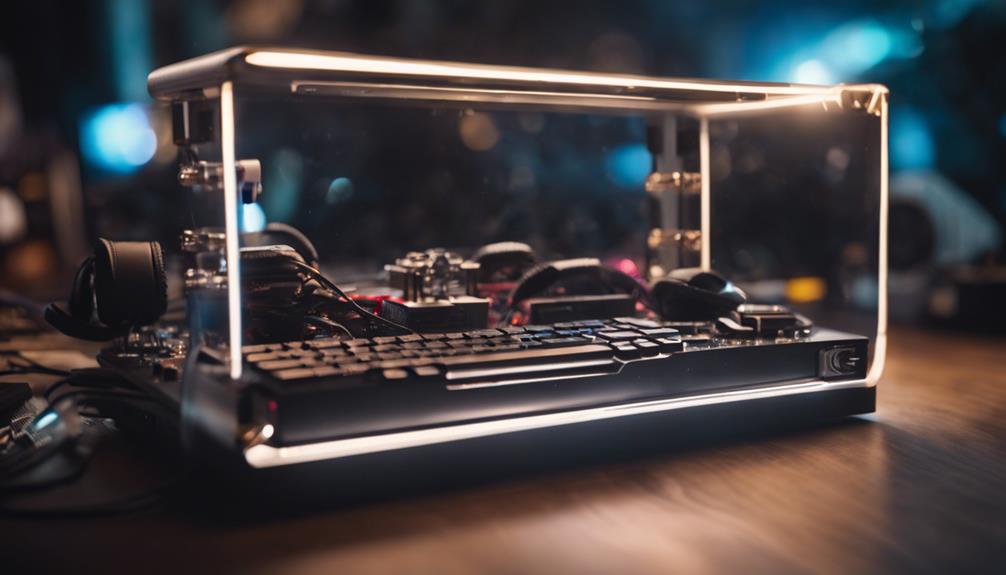
The integration of an external 4K desktop graphics card has revolutionized the Steam Deck, transforming it into a portable gaming rig with unparalleled performance.
Modders successfully connected the GPU to the Steam Deck through the M.2 PCIe x4 socket, utilizing an external graphics card dock. To bypass limitations posed by SteamOS, Windows 11 was booted from a microSD card.
The compatibility testing of various AMD graphics cards highlighted the enhanced performance achieved with the external GPU setup. This transformation turned the Steam Deck into a gaming powerhouse, elevating the visual quality and gameplay smoothness.
Despite the inherent CPU power constraints of the Steam Deck, the external GPU significantly enhanced gaming performance and overall user experience. The portable gaming rig now stands as a testament to the adaptability and potential for innovation within the gaming community, offering a glimpse into the future possibilities of portable gaming devices.
Enhanced Visual Quality On-The-Go

Plugging in a 4K desktop graphics card into the Steam Deck enables gamers to experience enhanced visual quality on-the-go.
The compatibility of the graphics card with the portable gaming rig allows for improved textures, lighting effects, and overall graphics fidelity, elevating the gaming experience to a new level.
High-resolution displays on the Steam Deck can fully showcase the detailed graphics produced by the 4K desktop graphics card, providing a more immersive and visually stunning gaming experience for users.
Portable 4K Gaming
Experiencing enhanced visual quality on-the-go, gamers can now enjoy 4K gaming with the Steam Deck when connected to a desktop graphics card. This setup allows users to explore the power of high-performance graphics cards like the Radeon RX series, enabling them to immerse themselves in gaming experiences with improved graphics fidelity and smoother frame rates. Steam games can be played in stunning 4K resolution, providing a portable yet visually appealing gaming solution.
However, while the prospect of portable 4K gaming is enticing, challenges such as power consumption and heat dissipation must be considered. Users may encounter issues related to potential performance bottlenecks when pushing the limits of the Steam Deck's capabilities with a 4K desktop graphics card. Despite these hurdles, with the right setup and optimization, gamers can transform the Steam Deck into a formidable gaming powerhouse capable of delivering impressive 4K gaming experiences on-the-go.
Graphics Card Compatibility
When connecting a compatible AMD 6000 series GPU to the Steam Deck, users can achieve improved visual quality on-the-go. It's important to note that only AMD 6000 series GPUs are compatible with the Steam Deck for this purpose.
Nvidia cards and Radeon 400/500 series GPUs are incompatible and may not provide the desired experience. Older GPUs like the RX 480 and RX 590 can encounter driver issues when plugged into the Steam Deck, potentially affecting performance.
To enhance graphics performance, setting up an external GPU with a compatible AMD 6000 series GPU can be a viable solution. This setup can greatly enhance visual quality and provide a better gaming experience on the Steam Deck.
Additionally, ensuring that the external GPU has sufficient ATX power and the capability to boot Windows can further optimize the gaming experience for users seeking improved graphics quality while on-the-go.
Pushing Steam Deck's Performance Limits
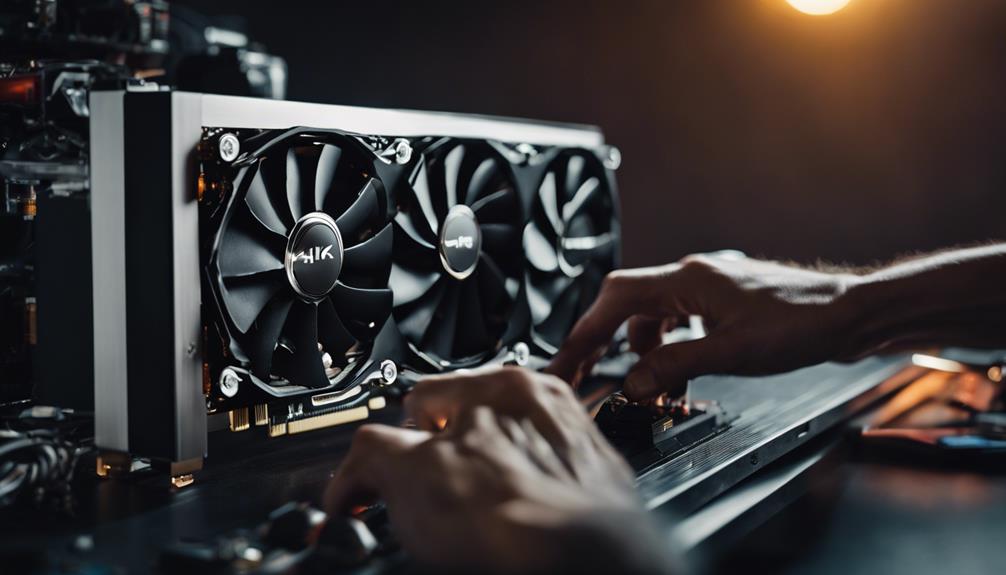
With the Steam Deck's APU potentially limiting CPU performance in demanding games, exploring external GPU setups becomes essential for pushing the device's performance limits. The need arises as the APU's power rating falls between 4W and 15W, potentially creating bottlenecks in CPU-intensive scenarios.
To address this, users have started using external GPU configurations to enhance gaming experiences on the Steam Deck. By booting Windows 11 off a microSD card, external GPU support was enabled due to limitations of SteamOS. Through various tests, it was found that AMD graphics cards exhibited compatibility with the Steam Deck, providing improved gaming performance.
Performance benchmarks showed frame rates ranging from 40 to 108 frames per second in different games, indicating the potential for significant enhancements. These findings open up possibilities for users to maximize the Steam Deck's capabilities beyond its native hardware constraints, showcasing the device's adaptability for diverse gaming needs.
Seamless Transition to High-End Gaming

Switching effortlessly to high-end gaming on the Steam Deck is facilitated by the incorporation of an external GPU setup. By connecting a 4K desktop graphics card to the Steam Deck, users can enjoy enhanced graphics performance, leading to improved gaming experiences with higher frame rates and better visual quality.
This external GPU setup transforms the Steam Deck into a powerful gaming platform capable of handling demanding titles with ease. The integration of a high-end graphics card provides users with a significant boost in gaming performance and graphic fidelity, offering a seamless shift to a more immersive gaming experience.
The ability to plug in a 4K desktop graphics card not only expands the capabilities of the Steam Deck but also opens up a world of possibilities for users looking to elevate their gaming experiences to a higher level. This feature showcases the versatility and adaptability of the Steam Deck, allowing users to tailor their gaming setup to meet their specific needs and preferences.
Immersive Gaming Experience Amplified
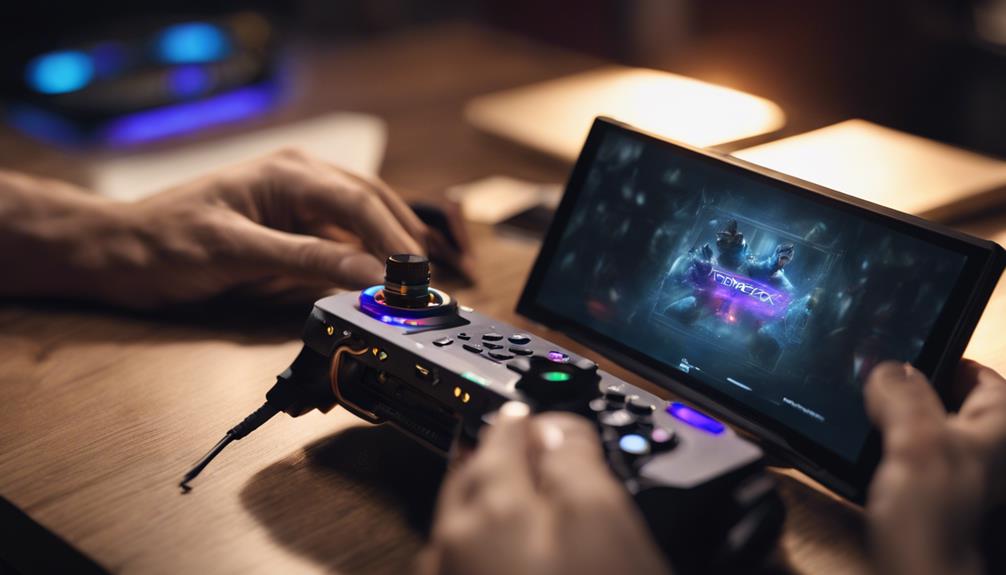
Immersing players in a heightened world of visual splendor, the integration of a 4K desktop graphics card elevates the Steam Deck's gaming experience to unparalleled levels. With this external GPU setup, users can revel in higher frame rates and enhanced visual quality, effectively transforming the Steam Deck into a powerhouse for immersive gaming sessions. The compatibility with high-resolution displays further enriches the gaming environment, offering intricate details and a more realistic gameplay experience.
The addition of the 4K desktop graphics card not only amplifies the Steam Deck's graphics performance but also fundamentally enhances the overall gaming experience. Players can now enjoy a more enjoyable and visually stunning gameplay experience, immersing themselves in a world that boasts both beauty and high performance. This integration of advanced hardware truly takes gaming on the Steam Deck to new heights, promising a level of immersion and engagement that was previously unattainable.
Unleashing the Power of Desktop GPU
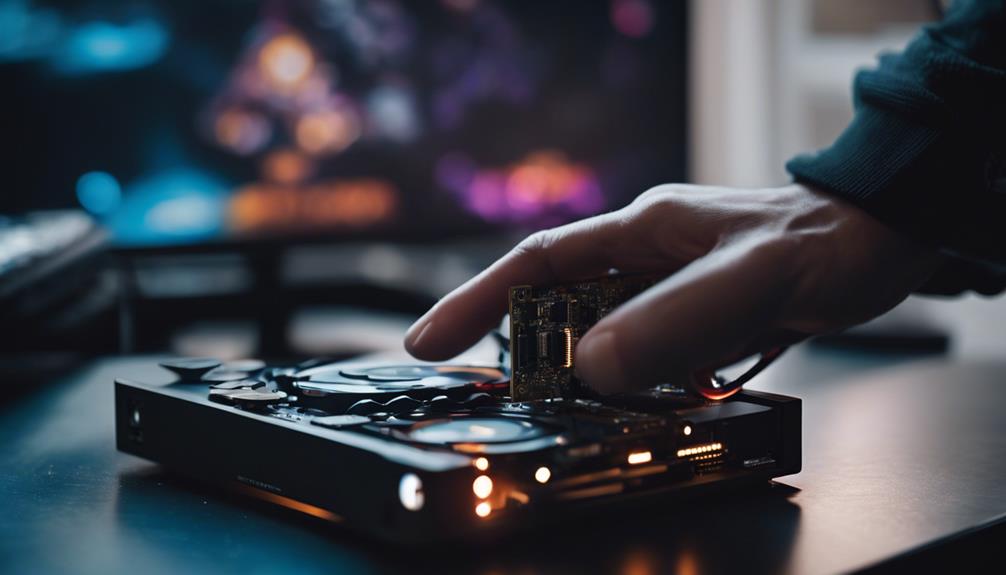
Connecting a desktop GPU to the Steam Deck opens up a world of possibilities for enhanced performance and graphics capabilities. By tapping into the potential of a desktop GPU, users can expect a significant boost in gaming performance and visual quality.
Overcoming technical hurdles to enable this setup showcases the adaptability and versatility of the Steam Deck platform.
Desktop GPU Compatibility
To maximize the full potential of desktop GPUs on the Steam Deck, users must confirm compatibility with only AMD 6000 series GPUs for peak performance.
When considering connecting a desktop GPU to the Steam Deck, it's important to note that Nvidia cards and Radeon 400/500 series GPUs aren't supported due to driver issues.
Utilizing M.2 to PCIe x16 adapters is essential for establishing a connection between desktop GPUs and the Steam Deck.
Additionally, to harness the power of a desktop GPU with the Steam Deck, users must have Windows 10 or Windows 11 installed.
It's essential to be aware that older GPUs such as the RX 480 and RX 590 may encounter compatibility issues when used with the Steam Deck.
Therefore, selecting an AMD 6000 series GPU and ensuring the necessary hardware and software compatibility are crucial steps in successfully integrating a desktop GPU with the Steam Deck.
Performance Boost Potential
Improving gaming performance on the Steam Deck can be significantly enhanced by connecting a 4K desktop graphics card. By pairing a high-end desktop GPU with the Steam Deck, users can tap into the full potential of their gaming experience, enjoying upgraded graphics and smoother frame rates.
The custom AMD APU of the Steam Deck, in conjunction with a powerful desktop GPU, allows users to experience desktop-like gaming on a portable device. Incorporating a desktop graphics card enables playing games at 4K resolution and high graphical settings, providing a substantial increase in visual quality and gameplay fluidity.
Harnessing the capabilities of a desktop GPU results in a notable performance boost, ensuring that users can immerse themselves in their favorite games with enhanced detail and responsiveness on the Steam Deck.
Technical Challenges Addressed
Addressing the technical challenges associated with integrating a 4K desktop graphics card into the Steam Deck harnesses the full power of the desktop GPU for enhanced gaming performance. To achieve this feat successfully, several key obstacles had to be overcome:
- Power Consumption Concerns: Ensuring that the Steam Deck can supply sufficient power to the desktop GPU without compromising performance was a critical consideration.
- Heat Dissipation Issues: Managing the increased heat generated by a high-powered desktop GPU within the confined space of the Steam Deck required innovative cooling solutions.
- Compatibility with Drivers: Ensuring that the drivers necessary to operate the desktop GPU seamlessly on the Steam Deck were compatible and optimized.
- Performance Bottlenecking: Mitigating potential bottlenecks in performance to fully leverage the capabilities of the 4K desktop graphics card within the Steam Deck's hardware limitations.
Top-Tier Gaming Potential Unlocked

Accessing top-tier gaming potential, modders successfully connected a 4K desktop graphics card to the Steam Deck through an external GPU setup. By repurposing the M.2 PCIe x4 socket on the Steam Deck and booting Windows 11 from a microSD card to enable external GPU support, they achieved a significant performance boost.
The integration of the high-end desktop graphics card enabled a new level of gaming experience on the Steam Deck, showcasing frame rates ranging from 40 to 108 frames per second in various games. This achievement highlights the device's versatility and potential for enhanced gaming experiences beyond its native capabilities.
The successful connection of a 4K desktop graphics card not only expands the graphical capabilities of the Steam Deck but also demonstrates the ingenuity and technical prowess of the modding community. This breakthrough opens up possibilities for users seeking to push the boundaries of portable gaming and experience top-tier gaming performance on the Steam Deck.
Revolutionizing Portable Gaming Setup

The innovative integration of a 4K desktop graphics card into the Steam Deck has redefined possibilities for portable gaming setups. This groundbreaking achievement by modders showcases the potential for transforming the Steam Deck into a true gaming powerhouse.
By connecting an external GPU via the M.2 PCIe x4 socket and booting Windows 11 from a microSD card, a new era of portable gaming experiences has emerged. The addition of a high-performance graphics card has enabled the Steam Deck to achieve impressive frame rates, ranging from 40 to 108 frames per second across various games.
This enhancement not only elevates the visual fidelity but also secures smoother gameplay on the Steam Deck, overcoming the APU's inherent power limitations. With this external GPU setup, gamers can enjoy a markedly improved gaming experience on the go.
- Integration of 4K desktop graphics card redefines portable gaming possibilities.
- External GPU boosts frame rates and enhances visual quality.
- Smooth gameplay experience achieved despite Steam Deck's power limitations.
- Innovative setup transforms Steam Deck into a formidable gaming device.
Maximizing Steam Deck's Gaming Capabilities

Maximizing the Steam Deck's gaming capabilities involves exploring the potential of external GPUs, offering a significant performance boost for enhanced gameplay. Users can optimize their experience by considering various performance enhancement options and contemplating future expansion possibilities to elevate their gaming setup further.
Gaming With External GPUS
Enhancing gaming performance on the Steam Deck is achievable by utilizing an external GPU. By tapping into the Steam Deck's M.2 PCIe x4 socket, users can connect a desktop graphics card to boost graphical capabilities drastically. To make this setup work seamlessly, it's essential to have Windows 10 or Windows 11 installed on the device and utilize m.2 to PCIe x16 adapters.
Additionally, ensuring the proper power supply, such as an ATX or Dell 8-pin 240W, is vital for the external GPU setup to function at its best. By optimizing the distribution of CPU power and enhancing GPU performance through these means, gamers can maximize their gaming experience on the Steam Deck.
- Connect a desktop graphics card via the M.2 PCIe x4 socket.
- Use Windows 10 or Windows 11 and m.2 to PCIe x16 adapters for compatibility.
- Ensure a proper power supply like ATX or Dell 8-pin 240W for stable performance.
- Optimize CPU power distribution and GPU performance to enhance the gaming experience.
Performance Boost Options
To enhance the Steam Deck's gaming capabilities further, users can explore various options for boosting performance.
Overclocking the external GPU is a popular method that can result in improved gaming experiences by pushing the GPU to operate at higher speeds, enhancing graphical performance.
Additionally, disabling the internal iGPU can help distribute the CPU power more efficiently towards gaming tasks, potentially boosting overall gaming performance.
Ensuring a stable power supply of up to 240 Watts is essential for consistent performance, preventing any power-related performance drops.
Monitoring GPU performance using tools like Afterburner can provide insights into the GPU's operation, allowing users to fine-tune settings for excellent gameplay.
The 16GB LPDDR5 RAM on the Steam Deck complements the use of an external GPU, supporting smooth operation and ensuring that the system can handle demanding gaming tasks effectively.
Future Expansion Possibilities
Future expansion possibilities for the Steam Deck's gaming capabilities include exploring additional external hardware integration for enhanced performance.
Leveraging the device's M.2 PCIe x4 socket allows users to connect an external GPU, as demonstrated by successful compatibility tests with various AMD graphics cards. This setup has the potential to greatly elevate graphics quality and frame rates on the Steam Deck.
To optimize performance, it's important to power the external GPU using an ATX or Dell 8-pin 240W power supply. Additionally, disabling the internal iGPU and fine-tuning CPU power distribution can further enhance the gaming experience when pairing the Steam Deck with an external GPU.
Gaming On-the-Go Redefined

Gaming on-the-go takes on a new level of performance with the integration of an external 4K desktop graphics card into the Steam Deck. Modders have successfully connected a 4K desktop graphics card to the Steam Deck, enhancing its gaming capabilities. By utilizing the Steam Deck's M.2 PCIe x4 socket and requiring Windows 10 or Windows 11 for compatibility, this external GPU setup enables the Steam Deck to achieve frame rates ranging from 40 to 108 frames per second across various games.
The addition of the external GPU transforms the Steam Deck into a powerful gaming device, providing improved graphics and smoother gameplay experiences. While CPU limitations may impact performance due to power constraints, the external GPU setup greatly enhances the gaming experience on the go. This innovation showcases the adaptability and potential of the Steam Deck as a portable gaming platform, offering users the opportunity to enjoy high-quality gaming experiences wherever they choose to play.
High-End GPU Integration Success

Successfully integrating high-end GPUs like the AMD 6000 series has revolutionized the gaming performance of the Steam Deck. This integration has allowed for a substantial enhancement in gaming experiences, offering better graphics quality, smoother gameplay, and an overall transformation of the Steam Deck into a powerful gaming device.
The successful integration of high-end GPUs was achieved through the use of m.2 to PCIe x16 adapters to connect the graphics card to the Steam Deck. Powering this external GPU setup required the utilization of an ATX or Dell 8-pin 240W power supply to guarantee peak performance. To further optimize performance, steps such as disabling the internal iGPU, slight GPU overclocking, and monitoring with Afterburner were undertaken, ensuring stable operation.
The results of this integration have showcased a remarkable improvement in gaming capabilities, illustrating the potential for high-end GPU integration to greatly elevate the gaming performance of the Steam Deck.
Portable Gaming Powerhouse Emerges

The integration of high-end GPUs into the Steam Deck has positioned it as a formidable portable gaming powerhouse, elevating its performance to unprecedented levels.
YouTuber ETA Prime's innovative connection of an external 4K desktop graphics card to the Steam Deck showcased a significant leap in gaming capabilities. By repurposing the M.2 PCIe x4 socket on the device and booting Windows 11 from a microSD card to overcome SteamOS limitations, the external GPU setup enabled enhanced gaming experiences.
Testing various graphics cards revealed that AMD cards were compatible with the system, achieving impressive performance ranging from 40 to 108 frames per second across different games. This demonstration highlights the substantial impact of the external GPU on the Steam Deck's gaming capabilities, solidifying its reputation as a versatile and powerful handheld gaming solution for enthusiasts seeking top-tier performance on the go.
Desktop Graphics Card Compatibility Tested

Having rigorously tested desktop graphics card compatibility with the Steam Deck, the results revealed specific limitations and requirements for best performance.
- Only AMD 6000 series GPUs are compatible with the Steam Deck for external GPU setups.
- Nvidia cards and Radeon 400/500 series GPUs are incompatible with the Steam Deck.
- Older GPUs like RX 480 and RX 590 have driver issues when used with the Steam Deck.
- Windows 10 or Windows 11 is required for setting up an external GPU with the Steam Deck.
To guarantee peak performance, users should adhere to these compatibility guidelines. Utilizing m.2 to PCIe x16 adapters can enhance the graphics performance when connecting compatible AMD 6000 series GPUs to the Steam Deck. It's vital to avoid attempting to use incompatible GPUs, as this can lead to technical issues and subpar performance. By following these specifications, users can maximize their external GPU experience with the Steam Deck.
Gaming Rig Portability Enhanced
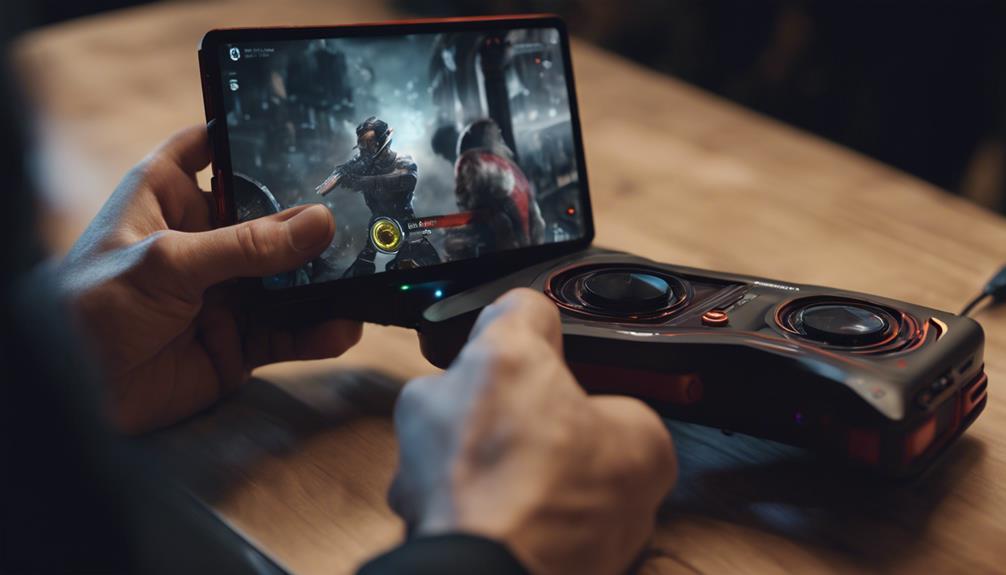
Enhancing the portability of gaming rigs, the Steam Deck allows users to connect a 4K desktop graphics card for desktop-level performance on-the-go. This setup not only improves gaming experiences with higher frame rates and better visual quality but also leverages the 4K capabilities of the desktop graphics card for stunning visuals on high-resolution displays. Despite challenges like power consumption concerns and heat dissipation issues, the enhanced graphics performance is a worthwhile trade-off for gamers seeking top-tier visuals. By plugging in a 4K desktop graphics card, users can enjoy a desktop-like gaming experience on the compact and portable Steam Deck, bridging the gap between handheld and desktop gaming.
| Gaming Rig Portability Enhanced | |
|---|---|
| 1. Improved gaming experiences | 4. Top-tier visuals |
| 2. Higher frame rates | 5. Bridging handheld and desktop gaming |
| 3. Better visual quality |
Frequently Asked Questions
Can You Use an External Graphics Card on Steam Deck?
External graphics cards can indeed be used with the Steam Deck by connecting them through the M.2 PCIe x4 socket. However, compatibility is limited to AMD 6000 series GPUs due to driver issues with Nvidia cards and older Radeon models.
Windows 10 or Windows 11 is required for setting up an external GPU on the Steam Deck. Powering the external GPU setup with an ATX or Dell 8-pin 240W power supply is crucial for peak performance.
Disabling the internal IGPU and overclocking the external GPU can enhance gaming performance on the Steam Deck.
Can a Steam Deck Handle 4k?
The Steam Deck can display 4K content, but its 7-inch touchscreen isn't optimized for 4K gaming. While the custom AMD APU may struggle with 4K demands, plugging a 4K desktop graphics card into the Steam Deck may not provide true 4K gaming output.
Users may encounter performance limitations and bottlenecking, impacting the gaming experience. It's best to manage expectations as the Steam Deck may not offer an ideal 4K gaming experience due to hardware limitations.
Can You Add Graphics Card to Steam Deck?
Yes, a graphics card can be added to the Steam Deck for enhanced performance. Through its M.2 PCIe x4 socket, the Steam Deck supports external GPUs like certain AMD models, such as the 6000 series.
To utilize this feature, Windows 10 or Windows 11 is required. External power from an ATX or Dell 8-pin 240W supply is also necessary for the setup. Adapters like m.2 to PCIe x16 can be used to connect the graphics card to the Steam Deck.
How Powerful Is the Steam Deck Graphics Card?
The Steam Deck's graphics card, based on RDNA 2 architecture, strikes a balance between performance and battery life.
The integrated GPU is optimized for portable gaming, supporting features like DirectX 12 and Vulkan.
While not as powerful as a desktop 4K graphics card, the Steam Deck's custom AMD APU delivers impressive performance within a power range of 4W to 15W.
Its design prioritizes efficiency for an enhanced gaming experience on the go.
Conclusion
To sum up, the integration of an entire 4k desktop graphics card into the Steam Deck has pushed the boundaries of portable gaming. While this feat has enhanced the device's performance and visual quality to a considerable extent, it's important to note that such modifications may not be officially supported or recommended by the manufacturer.
As exciting as this development may be for tech enthusiasts, it's essential to exercise caution and consider the potential risks involved in such unconventional upgrades.










